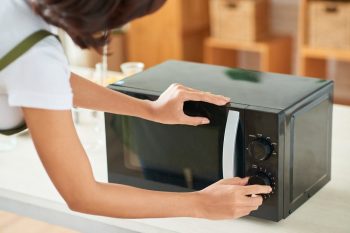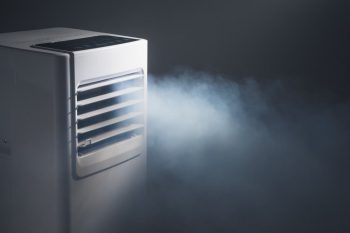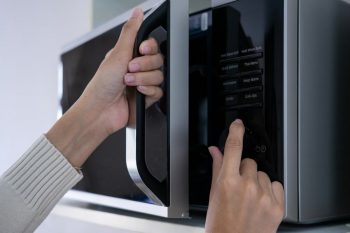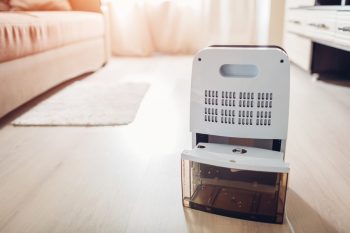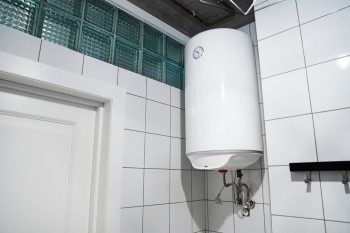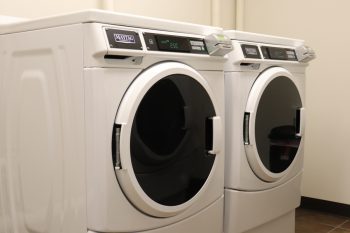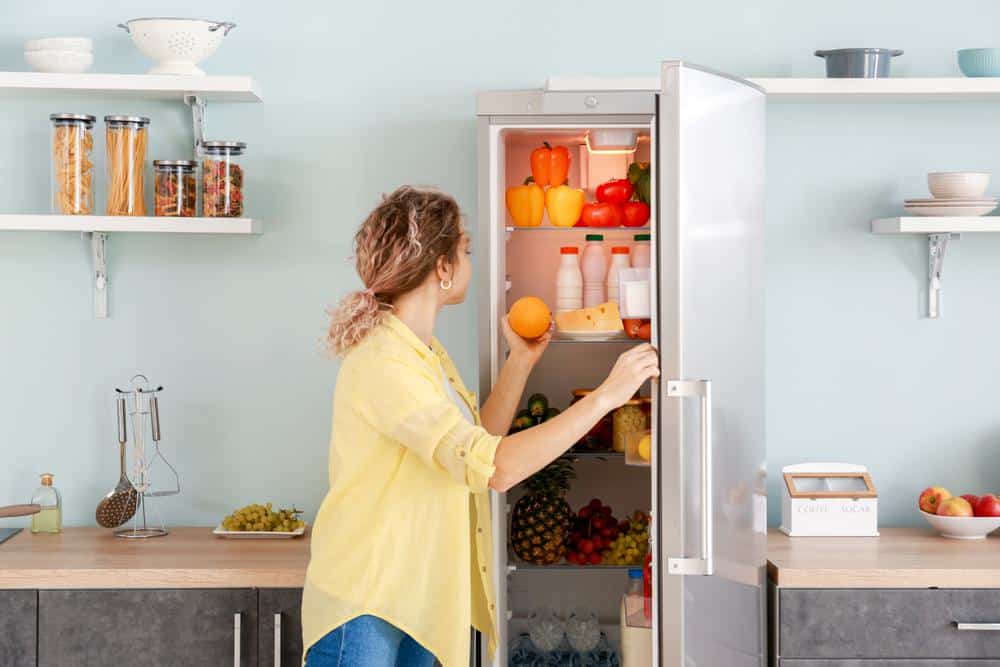
Defrosting your Samsung Family Hub Refrigerator’s ice maker can seem like a daunting task, especially if you’re not familiar with the process. However, with the right guidance, it can be done efficiently and effectively. This in-depth guide will walk you through the steps and provide you with useful tips to ensure a successful defrosting process.
To defrost the ice maker on a Samsung Family Hub Refrigerator, first, open the fridge and remove the ice bucket. Then, locate the reset button, which is often on the top right of the ice maker and may be labeled “Test.” Press and hold this button for 5 seconds until you hear a chime. Place the ice bucket back in its position to catch the ice that the maker will quickly dump. This process should be done only when necessary and not as a regular maintenance task.
Signs Indicating the Need for Defrosting
Before you start the defrosting process, it’s essential to identify the signs that your ice maker needs defrosting. Some of the most common signs include:
- The ice maker has stopped working or is producing ice at a slower rate than usual.
- Ice is building up on the condenser coils.
- Water leaks are present around the ice maker or refrigerator.
- The ice bucket is frozen or stuck in place.
- The back wall of the refrigerator has ice build-up, causing fan noise or the drawer to freeze shut.
If you notice any of these signs, it’s time to start the defrosting process.
Tools and Materials Required for Defrosting
To successfully defrost your ice maker, you will need:
- Soft cloth or sponge
- Towel or absorbent mat
- Bucket or container
- Warm water
- Mild dish soap
- Plastic scraper or similar tool (avoid sharp objects)
- Hair dryer or heat gun (optional)
Step-by-Step Defrosting Process
To defrost the ice maker on your Samsung Family Hub Refrigerator, follow these steps:
- Open the fridge and remove the ice bucket.
- Locate the reset button at the top right of the ice maker. It may be labeled “Test.”
- Press and hold the reset button for 5 seconds. You’ll hear a chime when the reset starts.
- Place the ice bucket back in its position to catch the ice that the maker will quickly dump.
Remember, the location of the reset button may vary depending on your Samsung refrigerator model. If it’s not on the top right of the ice maker, check the bottom.
How Long Does the Defrosting Process Take?
The duration of the defrosting process largely depends on the method used and the size of the food item. However, on average, defrosting in the refrigerator takes about 24 hours for every 4 to 5 pounds of food. Thawing in cold water takes around 30 minutes per pound, while defrosting in the microwave takes about 7-8 minutes per pound.
Precautions and Safety Measures
There are several precautions and safety measures to consider during the defrosting process:
- Use safe defrosting methods: The three safe ways to thaw food are in the refrigerator, in cold water, and in the microwave. Avoid defrosting at room temperature, as it can lead to bacterial growth.
- Plan ahead: Allow sufficient time for defrosting, especially in the refrigerator.
- Prevent cross-contamination: Place thawing food in a clean container or on a tray to catch any leaking juices.
- Monitor temperature: Ensure your refrigerator is consistently at or below 40°F (4°C). Avoid keeping food in the “Danger Zone” (40-140°F) where bacteria can grow quickly.
- Cook or consume thawed food promptly: Once the food has thawed, cook or eat it within 24 hours. Do not refreeze thawed food unless it was thawed in the refrigerator.
- Follow package instructions: Some food is best cooked from frozen, so follow the manufacturer’s instructions on pre-packed foods.
- Keep hands and utensils clean: Ensure your hands, utensils, and surfaces are clean when handling food during the thawing process.
- Know when to refreeze: Foods thawed in the refrigerator may be refrozen without cooking, but this is the only method that allows for safe refreezing without cooking.
Common Issues and Solutions
During the defrosting process, you might encounter some common issues like incomplete defrosting, a faulty defrost timer, a defective defrost heater, or improper thawing methods. These issues can be addressed by checking the defrost system components, ensuring that the freezer is not overpacked, using safe thawing methods, regularly cleaning the condenser coils, and consulting a professional appliance repair technician if needed.
Regular Maintenance Tips
To prevent the need for frequent defrosting of your ice maker, it’s essential to carry out regular maintenance. This includes regular cleaning, checking the inlet tube, replacing the water filter, adjusting the freezer temperature, cleaning the rubber seals, and scheduling regular maintenance and cleaning for your ice maker.
Remember, defrosting is not a regular maintenance task and should only be done if you encounter problems with the ice maker’s performance.
Common Causes of Ice Maker Malfunction
Identifying common causes of ice maker malfunction can help in troubleshooting and fixing these issues. These causes might include the ice maker being turned off or paused, a blocked dispenser, a clogged water filter, temperature set too low, water line problems, a defective water inlet valve, the ice maker not being level, ice stuck in the mold, and the control arm being out of position.
In conclusion, defrosting the ice maker on a Samsung Family Hub Refrigerator is a straightforward process when you have the right information and tools. By following the steps outlined in this guide, you can ensure a successful defrosting process and maintain the optimal functioning of your refrigerator.
Frequently Asked Questions
What should I do if the ice maker doesn’t start defrosting after I’ve pressed the reset button?
If the ice maker doesn’t start defrosting after you’ve pressed the reset button, ensure that you held the button for 5 seconds. If it still doesn’t start, unplug the refrigerator for a few minutes and then plug it back in. If the issue persists, it might be due to a defect in the ice maker or the refrigerator’s electric control board. In such cases, you may need to consult with a professional appliance repair technician.
Can I use a sharp object to remove the ice build-up in the ice maker?
No, you should avoid using sharp objects to remove ice build-up in the ice maker. Sharp objects can potentially damage the ice maker and the refrigerator. Instead, use a plastic scraper or a similar tool to carefully remove the ice.
How often should I clean the condenser coils of my Samsung Family Hub Refrigerator?
As a general rule of thumb, you should clean the condenser coils of your Samsung Family Hub Refrigerator at least twice a year. However, if your refrigerator is in a location that is particularly dusty or has pets that shed, you may need to clean the coils more often.
Is there a specific temperature I should set my Samsung Family Hub Refrigerator to for optimal performance?
Yes, for optimal performance, your Samsung Family Hub Refrigerator should be set to maintain a temperature between 37 and 41 degrees Fahrenheit (3 to 5 degrees Celsius) in the refrigerator and at or below 0 degrees Fahrenheit (-18 degrees Celsius) in the freezer.
What should I do if the ice maker still doesn’t work properly after defrosting?
If the ice maker still doesn’t work properly after defrosting, there might be other underlying issues like a blocked dispenser, a clogged water filter, or a defective water inlet valve. Try to troubleshoot these problems or consult a professional appliance repair technician.

